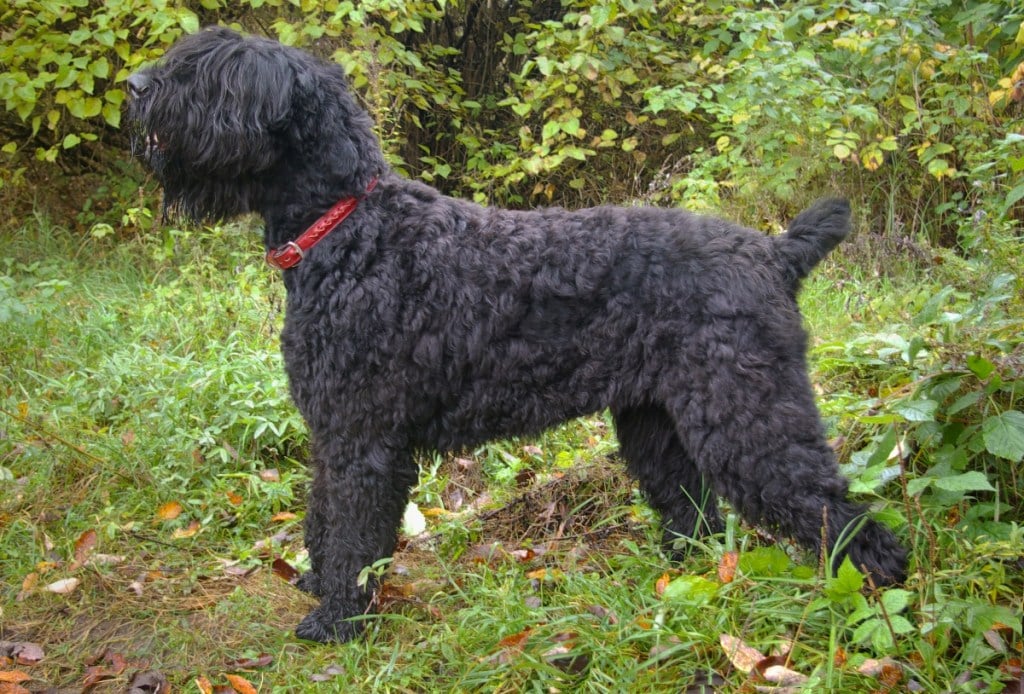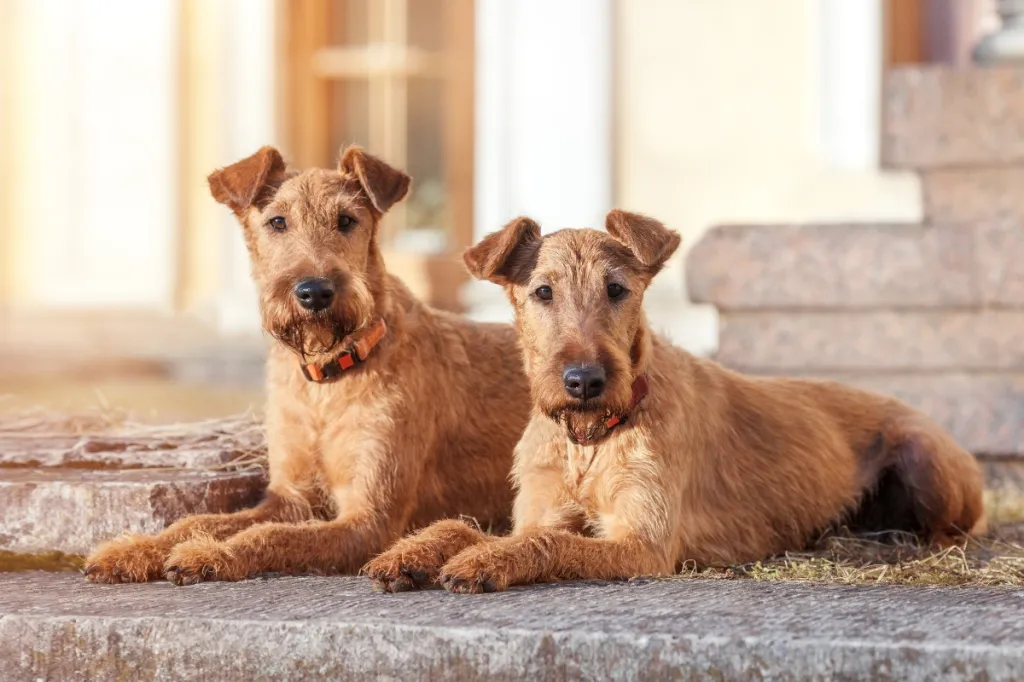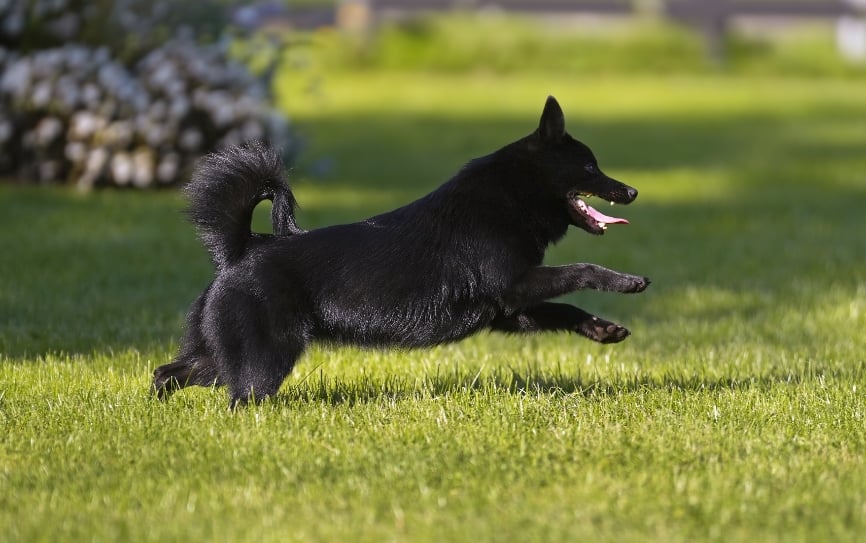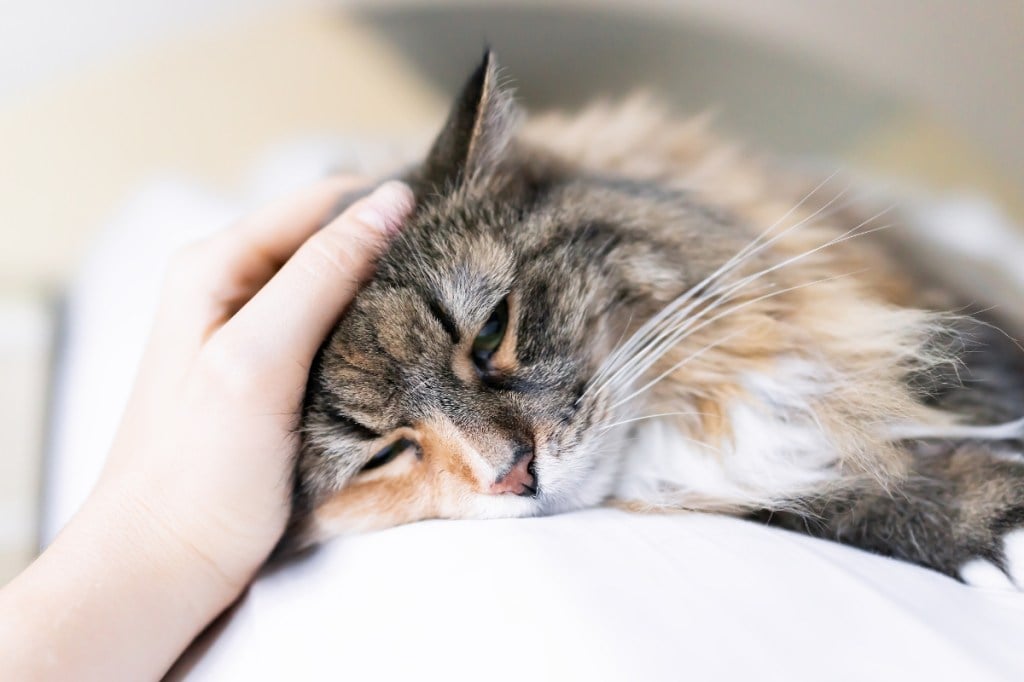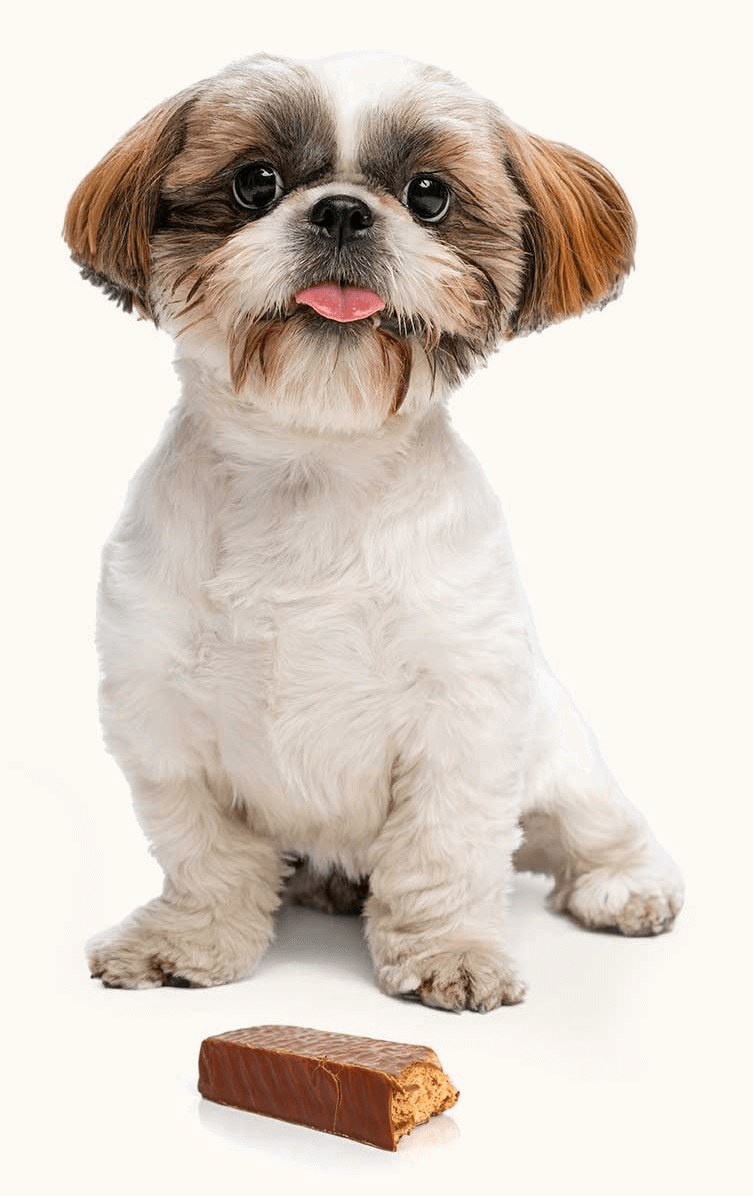Introduction to Boerboels
The Boerboel is a large dog known for its calm and confident demeanor. This working group breed is lovable, family-friendly, and generally healthy. Because of their territorial ways and tendency to pull on a leash and chew things in the home without proper training, they are best for pet parents who have experience with dogs.
If you are considering adding a Boerboel to your home, this Healthy Paws breed guide contains all the basic information you need to know about the breed. In this guide, we’ll cover the Boerboel’s temperament, characteristics, health, care, diet, and insurance needs.
Size of Boerboels
When a Boerboel is fully grown, the dog will weigh between 150 and 200 pounds. Males stand 24 to 27 inches tall, and females are 22 to 25 inches tall. Most of the dog’s growth is during puppyhood; however, a Boerboel may still grow a little between ages one and two.
This chart details how big you can expect your Boerboel to get as the dog grows from puppyhood to adulthood. Female weights are at the low end of the scale, and male weights are at the high end.
| Weight Chart | 3 months | 6 months | 9 months | 12 months | 24 months |
| Female and male Boerboels | 30 – 45 lbs. | 80 – 100 lbs. | 100 – 140 lbs. | 125 – 175 lbs. | 150 – 200 lbs. |
Characteristics of Boerboels
The most common ways to describe a Boerboel are intelligent, stubborn, confident, and wary of strangers and other dogs. They are affectionate dogs in their families, easy to groom, and usually docile. Boerboels need a moderate amount of exercise and plenty of room to move around.
However, they are not the most adaptable dogs and aren’t well-suited to apartment living. As you get to know a Boerboel’s personality, here’s what you can expect based on the breed characteristics:
| Breed Characteristic | Level (High, Medium, Low) |
| Affectionate with People | High |
| Good with Kids | High |
| Good with Pets | Low |
| Need for Exercise | Medium |
| Energy Level | Medium |
| Intelligence Level | High |
| Able to Be Trained | Medium |
| Amount of Barking | Medium |
| Amount of Shedding | Medium |
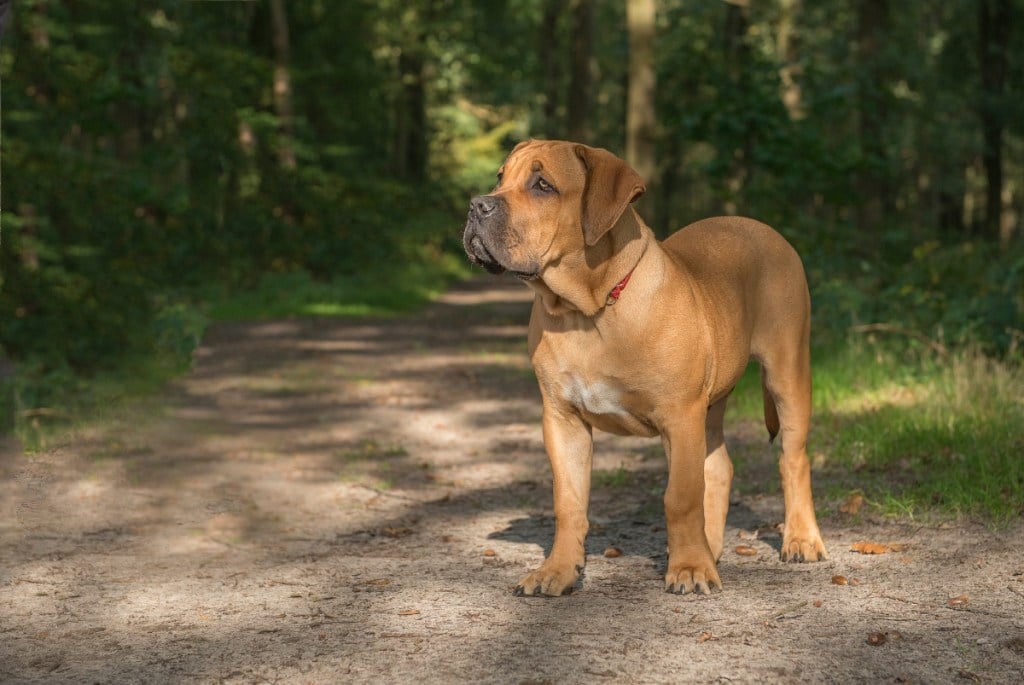
History of Boerboels
The history of the Boerboel breed takes us back to South Africa in the mid-1600s. Dutch, Huguenot, and German settlers in South Africa used the dogs to protect their homesteads. They brought large guard dogs with them to South Africa, including bull-type dogs and mastiffs.
Boer is a Dutch word that means farmer, which is how the Boerboel got its name because they were traditionally farmers’ dogs. Early breeders wanted the dogs to be fearless protectors and strong enough to scare away predators. Yet they were also bred to be intelligent enough to tell the difference between who to protect and who to keep a watchful eye on.
Today, Boerboels are sometimes used as therapy dogs with children. The American Kennel Club first recognized the Boerboel as a breed in 2015. Yet, it is still a rare breed outside its native South African homeland.
Boerboel Standard Information
The official standard of the Boerboel describes the breed as strong, agile, and hardy enough to survive harsh conditions. The dog is stable, confident, and calm in appearance and demeanor. Boerboels are judged on their mentality and functional efficiency at dog shows and competitions.
Here is an overview of the breed standard information for Boerboels:
Head:
- Impressively large size head
- Block, square, broad, and muscular
- Broad and deep muzzle
- Strong and wide jaws
- Teeth meet in a scissors bite
- Medium-size eyes with an intelligent expression
- Dark brown is preferable for eye color
- Medium, V-shaped ears
Neck, Topline, Body:
- Powerful, medium-length neck
- Firm and level topline
- Block and muscular body
- Thick tail set fairly high
- Tail may be docked or undocked
Forequarters:
- Strong-boned forelegs with well-defined muscles
- Shoulders are moderately sloping and powerful
- Short, thick, and strong pastern
- Front feet point straight forward
- Well-arched toes
- Black toenails with hair in between toes
- Thick, tough, black pads
- Front dewclaws may be removed
Hindquarters:
- Sturdy and muscular hindquarters
- Strong-boned hind legs
- Broad and relatively short metatarsus
- Hind feet point straight forward
- Rear dewclaws are usually removed
Coat:
- Short, smooth, dense, and shiny coat
- Thick and loose skin that fits smoothly
- Well-pigmented skin
Color:
- Black mask is desirable
- Red, brown, reddish brown, cream, fawn, any color brindle, and Irish-marked colors acceptable
- White patches on legs and forechest are permissible
Gait:
- Agile with powerful and purposeful movement
- Front rear complements strong rear drive
- Back firm and strong without excess body roll
- Legs converge under body toward a center line
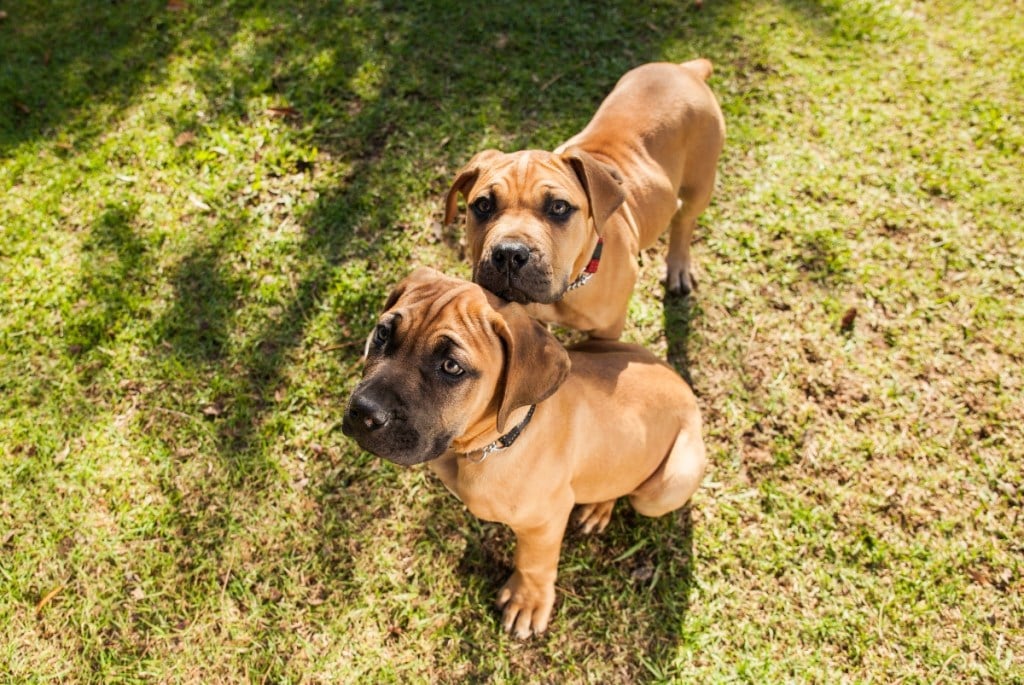
Caring for Boerboels
It is important to ensure your Boerboel is physically and mentally stimulated with play, exercise, and quality time with family members. Care for a Boerboel is relatively straightforward. However, your dog will need plenty of space to exercise daily and early and consistent training so that the Boerboel grows into a well-mannered adult dog.
Here are some general tips for taking the best care of a Boerboel :
Best Living Environments:
- No apartments
- Homes with a fenced yard and plenty of play space
- Not the best breed to share a home with other dogs
- Great in households with children
Type of Exercise:
- At least an hour of exercise daily
- Long walks in the neighborhood
- Jogging with family members
- Vigorous playtime
- No off-leash time unless in a fenced area
- Not the best dog for dog parks
Mental Enrichment:
- Puzzle toys
- Spending time with family members
Training Strategies:
- Start training as a puppy to start good behaviors
- Use positive reinforcement methods
- Can be stubborn dogs to train
- Expose young Boerboels to other dogs, people, and locations
Grooming Tips:
- Fairly easy to groom
- Brush coat once weekly with a grooming mitt or soft bristle brush
- More shedding in the spring and fall
- Brush teeth daily
- Trim nails about once a month
- Clean ears weekly
- Bathe monthly
Common Health Problems of Boerboels
Large dog breeds like the Boerboel tend to have shorter life spans than smaller dogs. Boerboels tend to live between nine and 11 years on average.
However, they are generally healthy dogs, especially if you get your Boerboel through a responsible breeder who screens for heart disease, hip and elbow dysplasia, and eyelid disorders. The national breed club for Boerboels recommends these tests to ensure healthy puppies.
These are some of the most common health issues that arise with Boerboels:
- Hip dysplasia
- Elbow dysplasia
- Vaginal hyperplasia (female reproductive system disorder)
- Juvenile epilepsy (neurological disorder that affects puppies)
- Bloat (gastrointestinal disorder)
- Heart disease
- Ectropion and entropion (eyelid disorders)
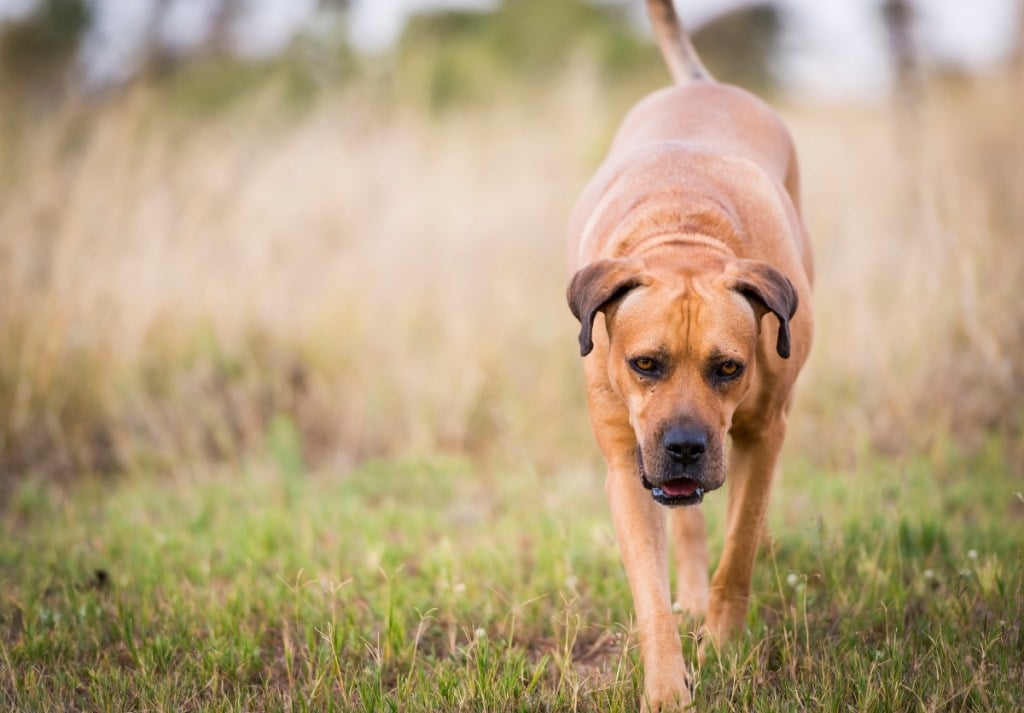
Diet and Nutrition for Boerboels
As a very large dog, an active adult Boerboel will need between six and 10 cups of dry dog food per day. It is best to divide food into three to four daily meals for puppies and two daily meals for adults. Fully grown adult males need about eight to 10 cups of food daily, while adult females need about six to nine cups daily.
Your Boerboel should eat a diet that is specifically formulated for a large breed dog to ensure they receive the appropriate amount and proportion of nutrients for their size. For example, food for large-breed dogs has nutrients like omega fatty acids to promote joint health.
Talk to your vet about exact portion sizes and dog food recommendations based on your Boerboel’s weight, activity level, and age.
Where to Adopt or Purchase Boerboels
The American Boerboel Club is the national breed club for Boerboels. It provides resources with information about the breed, an approved breeder list, and a guide to getting a Boerboel puppy.
There are also rescue organizations that you can contact to learn about adoptable Boerboels near you. Examples of organizations may include Gentle Giants Rescue and Adoptions, Boerboel Rescue, Boerboel Rehoming Network South Africa, the U.S.A. Boerboels in Need Network, and Guardian Boerboels.
Related Breeds
Does a gentle giant sound like the perfect addition to your household? Beyond just Boerboels, there are many other dog breeds that are similar to this kind of dog and worth considering for your new pet.
Here are some examples:
Pet Insurance for Boerboels
One of the best things you can do to be proactive about your Boerboel’s health and longevity is to sign your pup up for dog health insurance through Healthy Paws. We have one easy-to-understand health plan to give you peace of mind that you can afford costly vet bills if your Boerboel becomes sick or is involved in an accident.
We offer flexible premium and deductible options with no administrative or enrollment fees. And our plan covers everything from injuries to illnesses, cancer care, alternative care, emergency hospitals, hip dysplasia, chronic conditions, and more.
To learn more about how pet insurance works, please call us at 855-898-8991. We also invite you to share a few basic details about your Boerboel so that we can provide you with a Boerboel health insurance quote today.



